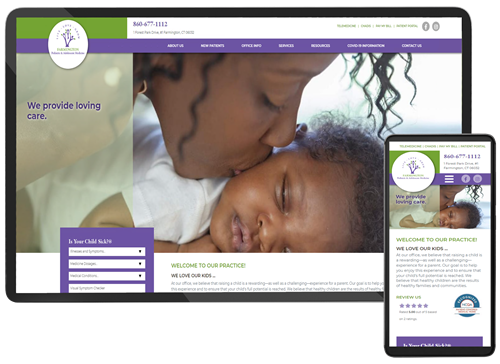

Imagine you are window shopping and you find yourself slowing down as you come upon a store that piques your interest. What do you do next? If you are like us, you naturally wander into the store to browse and see if there is something more to it.
In exactly the same way, when someone comes across your medical practice’s ad or mention in the physical or online world, they will naturally make their way to your website.
Your website is to your practice what a brick and mortar store is to a retailer. The layout of a physical store, the ease of reaching out to an object, the trial experience, all impact your decision to purchase. In the same manner, how your website looks and how easy it is to navigate can either turn away visitors, or turn them into users of the services you provide.
So how can you ensure that people visiting your website stay on to use your healthcare services? While there are many factors that you should pay attention to, here are 3 things to keep in mind when creating web design for medical practices.
Even though medical practices may provide similar services such as well visits or sick visits, you have a unique selling point (USP) hiding just underneath the surface. This could be the breadth of expertise your healthcare providers offer, your timely and helpful service, your research, or your long history in your community. Identifying your USP will help guide the web design for your medical practice.
Web design for medical practices includes different aspects such as site architecture and search engine optimization, but one of its most important focus areas is user experience. If your USP is the depth of your expertise and breadth of your team’s experience, then a visitor to your website should be able to easily see this. For example, you may consider listing out the health care areas you specialize in on the Home page so that it’s the first thing visitors see. You could consider making each of these services clickable so that when someone sees a service they are interested in, it is easy for them to take the next logical step and learn more about it.
Your site is one of the first impressions a visitor has of you. The web design for your medical practice should be a way for them to get a taste of the experience they can expect with you.
Every website should be accessible to everyone, including people with disabilities. Web design for medical practices, however, should double down on this important aspect.
If you have videos on your site, these should include closed captions. This helps people who may be hard of hearing to participate in the content of your website. The brand colors you use on your website should have a good contrast, so text and call-to-action buttons are easily readable.
In addition to this, there are several other aspects of web design for medical practices that strengthen a site’s accessibility and help make it ADA (American Disabilities Act) compliant. As a medical practice you should ensure that your website is accessible by everyone.
One of the most important aspects of web design for medical practices has to do with how responsive your website is. This means how your website looks and how people interact with it should be device-agnostic.
While back in the day, most people used desktops, mobile devices now play a larger role in bringing visitors to your website. It is important that medical web designs are developed keeping different orientations, screen size, and usage habits in mind.
Let’s say your website has images to showcase your services, or your team. Good web design for medical practices will ensure that the orientation of these images can automatically change depending on the device someone is using. Or, a sign-up form to your practice newsletter may be clearly visible on the desktop version of your website. However, this form may be hidden behind a call-to-action button on the mobile version to save screen space.
Delivering a seamless experience to your site visitors irrespective of the device being used, is an integral part of web design for medical practices.
A strong web design is built on a solid understanding of user experience. At Remedy Connect, we draw from years of experience in developing web design for medical practices that ensures a good user experience, which eventually helps your site rank better on the search engine results pages. Contact us today to plan and execute a web design for your medical practice that will attract visitors and turn them into users of your service.